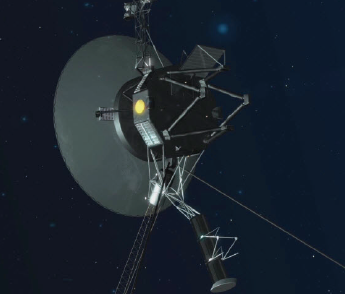SPACE TRAVEL IN THE 90’S
1. Two spacecrafts took off from Florida, USA, on 20th August and 5th September in 1977. Voyager 1 and Voyager 2 started a long and difficult journey to the end of the solar system. They flew past new places in our solar system and sent photos of planets and moons to NASA (National Aeronautics and Space Administration).
2. Voyager 1 arrived at Jupiter, the largest planet in the solar system. At a distance of 349,000 kilometres from Earth, scientists received the best photographs of the planet from Voyager 1 and they discovered a lot about the planet’s weather from them. They studied the clouds, lightning and strong winds of three hundred kilometres per hour. Jupiter also has a moon with volcanoes. Voyager 1’s next stop was Saturn. Saturn is smaller than Jupiter and it’s most famous for its rings. From Voyager 1’s photographs, scientists discovered the rings are mostly water and ice.
3. Voyager 2 also visited Jupiter and Saturn after Voyager 1, but then it continued to Uranus. Uranus is the coldest planet in the solar system. There is a lot of ice on its surface. During its journey round Uranus, there were mechanical problems with Voyager 2’s camera. Finally, scientists fixed it and Voyager 2 travelled to Neptune. Neptune is the furthest planet from the sun (4.5 billion kilometres) and it was the last planet on Voyager 2’s journey.
4. The two Voyagers finished their official journeys in 1989, but they continued travelling. Now they are at the end of our solar system and scientists think the two spacecrafts can travel until 2025. So Voyager 1 and 2 are on their most amazing journey: into space outside our solar system.

